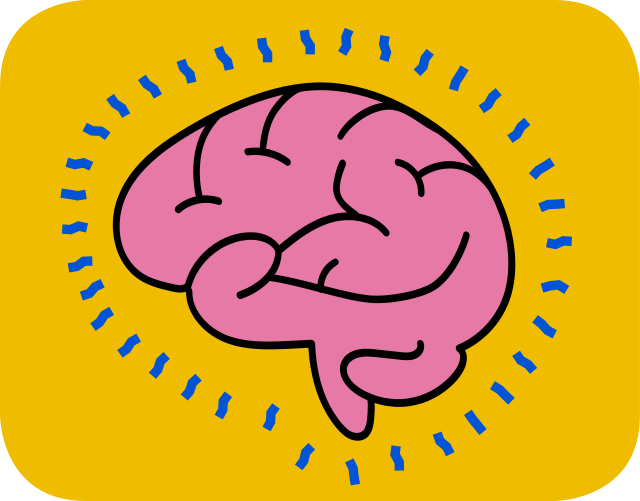Battle of Mind & Body
October 7, 2021
Think about it, how often do people truly recognize the connections between emotions and sickness? Some would say not at all, many would say not often, but the more appropriate answer would be not enough. The effects our emotions have on our state of well-being are immense and not understood by a vast amount of people. The term used to describe a sickness associated with emotion is a psychosomatic disorder. Psychosomatic disorders are illnesses that arise due to psychological stressors that negatively impact somatic, or bodily function. These illnesses are not a result of physical injury or infection, but the effect of “inappropriate activation of the involuntary nervous system and glands of internal secretion” (Britannica). Stressors can include: anxiety, depression, fear, trauma, shame, or guilt. Very often, people will develop psychosomatic disorders without realizing that the very cause of their sickness is the commotion occurring within their minds. In some cases, people may view these kinds of disorders as imaginary, all in your head, or ludicrous. However, this is surely not the case as psychosomatic conditions such as hypertension, GI disturbance, dermatitis, ulcers, or psoriasis greatly affect a person’s quality of life. Although the listed conditions may not always form due to psychosomatic reasons, they are often worsened by emotional stressors.
The study of these disorders holds its name under the field of psychosomatic medicine. Psychosomatic medicine “is an interdisciplinary medical field exploring the relationships among social, psychological, and behavioral factors on bodily processes and quality of life” (American Psychosomatic Society). Typically, doctors who provide aid for psychosomatic disorders have their Medical Doctorate in the psychiatric field. These psychiatrists then specialize in psychosomatic disorders in order to serve portions of the population that struggle with such conditions. What these doctors typically assess are “psychological factors affecting individual vulnerability…; biopsychosocial consideration of patient care in clinical practice; [and] specialist intervention” (PubMed).
The three main types of psychosomatic illnesses include: patients who have both psychiatric and medical illnesses that complicate one another, patients who have psychiatric problems as a direct result of a medical illness, and patients whose psychiatric problems cause medical illness. The current point of relevance focuses on the third type: somatoform disorders that display physical symptoms as a result of psychological problems. Somatoform disorder may be genetic, but are often triggered by strong emotions that manifest on a consistent basis. The exact cause of somatoform disorders is largely unknown, but they may form as a result of coping strategies, habits, personality characteristics, or even issues with nerve impulses carrying false signals to the brain.
Bodily manifestation of stressors can vary depending on gender. For example, females often report fatigue, irritability, abdominal bloating, and changes or loss of their menstrual periods. For males, common symptoms include chest pain or increased blood pressure. These symptoms also vary by age; younger children may have difficulty focusing in school or frequent stomachaches, while teens may have what’s known as “teen angst” or depression due to major social and hormonal adjustments. Within the elderly population, depression is common as a result of factors such as isolation, loss, grief, and chronic or life-altering health conditions. Within all these age groups, the effects of certain emotional struggles often manifest themselves within physical illnesses or complications. Something as simple as the body fighting the common cold or flu can become more difficult due to stress-compromised immunity. In addition, catching infections becomes easier, while recovering from other illnesses takes longer. An important thing to remember is that emotional stressors that build up within the body without release will come out one way another, often through physical symptoms.
Treatment in regards to psychosomatic disorders truly depends on the severity and circumstance of the patient’s condition. Many patients “respond to a combination of drug therapy, psychoanalysis, and behavior therapy”, but some can absolve their symptoms through general stress management (Health Grades). Another option, Cognitive Behavior Therapy provides patients with new ways to cope with and solve their issues through gaining a deeper understanding of their disorder. Through CBT, patients are encouraged to set realistic goals that will help them identify and alter emotional behaviors that negatively affect their lives and worsen their disorders.
Unfortunately, a strong stigma exists against psychosomatic disorders, often preventing people from seeking the help they need in a timely fashion. The misconceptions that these disorders are made up, imaginary, or dramatized are rooted in societal misunderstanding. Surprisingly enough, members of the medical and research communities are often skeptical of the existence of psychosomatic disorders due to the lack of understanding of their origin. However, those coping with psychosomatic conditions that are only worsened by their emotional stressors feel their symptoms in a very real, unimaginary manner. In a time where struggles such as anxiety, depression, or anger are found on a very consistent basis, acknowledging the prevalence of psychosomatic conditions or disorders as a result of these emotional struggles is paramount to the wellbeing of millions. A key element in preventing the development of psychosomatic disorders is finding a means to “vent”, or talk through emotional struggles with a trusted person. Whether this be a family member, therapist, or friend, simply acknowledging and coping with emotions can limit the dangerous build-up of stress that can cause psychosomatic conditions. In addition, finding out which coping strategies work for you personally will furthermore help the prevention of these disorders. Rather than the key being to live and accept these disorders, the key is to learn how to fully experience and then manage these emotional stressors in order to avoid physical effects.
Works Cited
Fava GA; Sonino N. “Psychosomatic Medicine.” International Journal of Clinical Practice, U.S. National Library of Medicine, July 2010,
https://pubmed.ncbi.nlm.nih.gov/20642714/.
Klein, Yael. “Do I Have a Psychosomatic Disorder?” Evolve Treatment Centers, 25 Jan. 2021, https://evolvetreatment.com/blog/psychosomatic-disorder/.
“Psychosomatic Disorder.” Encyclopædia Britannica, Encyclopædia Britannica, Inc., 2019, www.britannica.com/science/psychosomatic-disorder.
“Psychosomatic Illness.” Healthgrades, Healthgrades Editorial Staff, 1 Dec. 2020, www.healthgrades.com/right-care/mental-health-and-
behavior/psychosomatic-illness.
“Psychosomatic.” Dictionary.com, Dictionary.com, www.dictionary.com/browse/psychosomatic.
Schimelpfening, Nancy. “How Your Stress and Depression Can Really Make You Sick.” Verywell Mind, 23 Mar. 2020,
www.verywellmind.com/depression-can-be-a-real-pain-1065455.
“What Is a Psychosomatic Disorder?” The Center for Treatment of Anxiety and Mood Disorders, 5 May 2021,







